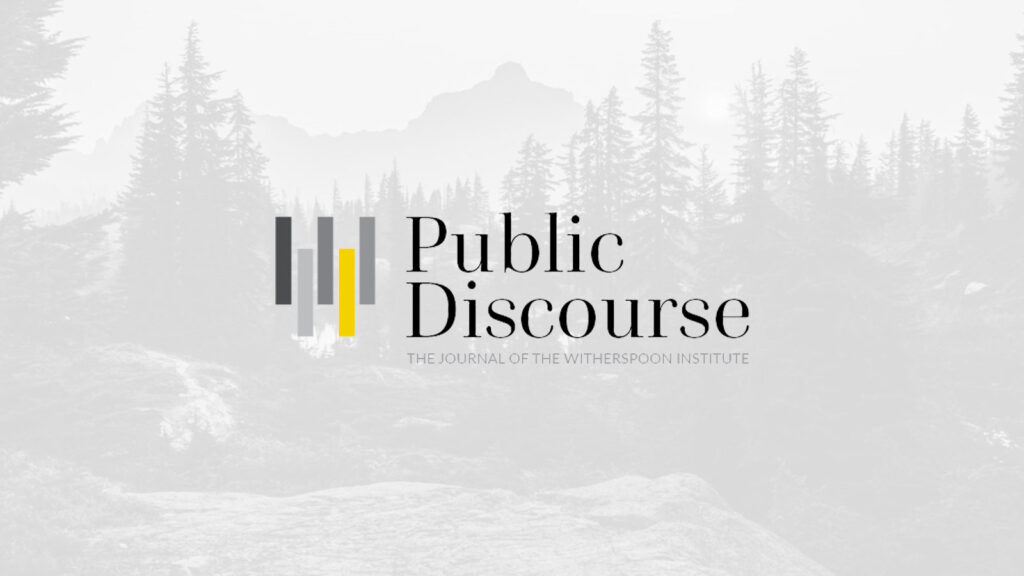I propose to outline why it serves the interests of American women for the federal government once and for all to remove itself from the business of abortion funding.
It has been forty-one years since the Supreme Court overturned the abortion laws of the fifty states. This bill shows the power of a dream of human rights that cannot be extinguished, no matter the amount of money or powers arrayed against it. Americans, including American women, have never made and will never make our peace with abortion. It is a feature of US culture I hear admired in my work all over the world. Abortion is not a social good deserving of federal funding, let alone funding in the name of women’s health or well-being.
I make two main points: first, that neither American lawmakers nor citizens, especially women, understand abortion as a public good meriting funding. And second, that abortion is not a part of any genuine “women’s health” agenda according to the federal government’s own statements.
Abortion is understood both by lawmakers and citizens to be different from all other projects, programs, or procedures receiving federal funding. The federal budget is broadly devoted to national security, social safety nets, health care, veterans, federal retirement, safe food and drugs, the environment, and investments in education, scientific and medical research, and infrastructure. These support and promote human life versus death, insecurity, and want.
Start your day with Public Discourse
Sign up and get our daily essays sent straight to your inbox.But abortion, in the words of our Supreme Court, is different. Even if the Court doesn’t get its biology exactly right, it has said that “no other procedure involves the purposeful termination of potential human life.” Even Supreme Court Justices who explicitly support legal abortion acknowledge abortion’s uniquely problematic nature. Justices Stevens and Ginsburg in Stenberg v. Carhart wrote that both dismemberment abortions and partial birth abortions are “equally” “gruesome” and “brutal,” and that neither one “is more akin to infanticide than the other.” Justice Kennedy’s majority opinion in the second partial-birth abortion case, Gonzales v. Carhart, said abortion “extinguish[es] life” and repeatedly stated that abortion “kill[s].” Finally, President Obama has opined that he wishes abortion to be “rare” and that it is a “tragic” matter.
Lawmakers at the state level witness similarly to the nation’s refusal to make peace with abortion. According to the Guttmacher Institute, 205 restrictions on abortion were enacted in the States between 2011 and 2013, a record pace.
And even the most strenuous supporters of legal abortion—even a leader of the huge abortion provider Planned Parenthood—acknowledge that there is a baby growing inside a pregnant woman, such that abortion ends a life.
Having been a participant in the abortion debate for decades, I want to highlight how disturbing it is when supporters of legal abortion admit that abortion destroys a human life but continue to demand legal abortion and abortion funding. They do so in the name of women’s health and rights. So let me turn to the matter of women’s beliefs and women’s health in relation to abortion.
It is no longer contestable that women embrace the pro-life label and positions as much or more than men, and that poor women are somewhat more pro-life than wealthier ones. A terrific and quite detailed study issued by the Rand Corporation in cooperation with the Packard, Hewlett, and Rockefeller Foundations, after calling abortion an “enduringly divisive issue” in the American political landscape, reported stable attitudes on abortion over decades. According to their cross tabulations, females survey a few percentage points more pro-life than men. This figure is within the margin of error, but its persistence over decades demonstrates its significance. Also, the less educationally privileged are more pro-life than the privileged by margins of up to 45 percent. And the poor are more pro-life than the wealthy by between 16 and 25 percent.
These differences persist on the question of abortion funding. To wit: a majority of the public opposes government funding for abortion; women oppose funding by a few percentage points more than men; the more educationally privileged support funding more than the less privileged; and the well-off support abortion funding for the poor more than the poor favor it for themselves. This last fact is particularly unpleasant.
Investigations of what drives women’s voting also fail to turn up any special female support for abortion or abortion funding. Women vote on the economy, jobs, and general social-welfare spending, along with their perception of which candidate really cares about the people she or he will serve. If you glance at the League of Women Voters website, you will find that it highlights voting rights, gun safety, campaign finance, and the environment. It does not highlight abortion or abortion funding.
Finally, when you look at federal sources and documents and experts engaging and promoting women’s health, you notice two things.
First, the federal government is decidedly uncurious about the role abortion plays in women’s health. The Centers for Disease Control (CDC) doesn’t even require mandatory reporting by the states and consequently doesn’t have complete or standardized data on abortion. In 1989, Surgeon General Koop concluded after a complete review of then-existing material on the effect of abortion on women’s health, that available studies were insufficient. He recommended that “consideration be given to going forward with an appropriate prospective study.” But the government has not undertaken such a project, even to this day.
During my time on the National Advisory Child Health and Human Development Council in the early 2000s, I vividly recall asking personally and repeatedly for even one question about abortion on long-term surveys about women’s health. I was continually put off, despite the fact that abortion was then and is now performed upon women about 3300 times every day. This lack of federal curiosity persists despite increasing evidence from well-regarded European studies following hundreds of thousands of women for their entire lives. A recent meta-analysis in the British Journal of Psychiatry surveyed studies comprehending nearly 900,000 women which showed that abortion is associated with a significantly increased risk of problematic mental-health outcomes.
Second, on the matter of women’s health and abortion, in addition to the federal government’s having no firm idea about total numbers of abortions, or abortion’s impact on women’s health, and no real curiosity on the matter, it also appears that when the federal government is acting seriously on behalf of women’s health—via women’s health initiatives from the National Institutes of Health (NIH), the White House, or the Department of Health and Human Services (HHS)—that it does not raise the subject of any health “need” for abortion, let alone abortion funding.
Take a look, for example, at recent, significant federal initiatives on women’s health, such as the NIH’s strategic plan for women’s health and sex differences research for 2010–2020, or the White House Council on Women and Girls’ report Women in America: Indicators of Social and Economic Well-Being. Or look at the HHS Guide to Staying Healthy, its websites designed to give women and girls “comprehensive” health information, or its Healthypeople 2020 initiative, providing “science-based, 10-year national objectives” for improving the health of all Americans. What do we find in these many lengthy and comprehensive compilations of women’s health needs and advice to American women from their federal government?
We find frank acknowledgment that a pregnant woman is carrying an “unborn baby” and reference to human life beginning at conception. We find a lot of advice about what the CDC identifies as the leading threats to women’s health, threats such as heart disease, stroke, and cancer. We find advice and promises regarding future research upon diseases women suffer more or differently than men. We find attention to the highlighted health problem of women’s infertility or difficulties carrying a pregnancy to term, as well as attention to avoiding substances during pregnancy that could “damage … your baby.”
In conclusion, the federal government has collected no dispositive data about the relationship between abortion and women’s health. When it addresses women’s health priorities, it rather offers advice to women about caring for their unborn child, and says nothing about abortion as health care. Credible studies indicate an association between abortion and mental distress for some women.
There is no empirical basis, therefore, upon which federal lawmakers can make the claim that women’s health is promoted by funding abortion.
By themselves, these facts indicate how HR 7 serves American women. But there is another service for women HR 7 might well perform. Regular squabbles over federal funding for abortion across myriad pieces of legislation seem to have taken the place of an actual legislative agenda for women’s actual needs. Instead of debating policies supporting women’s care work, or work/family balance, policies addressing paid leave or social security benefits—instead of debating ideas about enabling women to break the cycle of poverty and non-marital childbearing—Congress continually debates abortion funding. It is time to settle the matter of federal funding for abortion once and for all and move on to a real women’s agenda.













